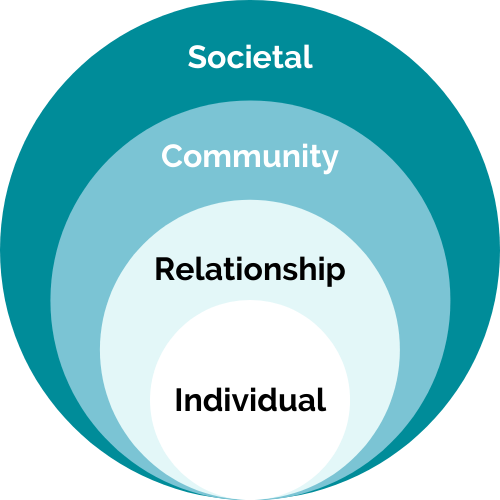
The social ecological model (above) shows the levels of influence that impact someone's likelihood of experiencing of causing harm.
Community-Level Prevention
Community-level prevention is a public health concept that looks at how the environment where our social interactions take place can impact the way people behave. This can be either the physical environment (spaces) or social norms and policies.
How we are deepening our prevention work:
- Creating safer spaces in schools and communities
- Changing school or community norms to support bystander intervention
- Adopting policies that keep our students and community members safe
The three evidence-informed community-level prevention strategies in Kentucky are hotspot mapping, social norms change, and policy change. KASAP plans to implement one of these strategies in each It’s My Space middle school and Green Dot high school and community by 2023.
Hotspot Mapping
A process of data collection that identifies where in a place people feel safe and unsafe. That data is used to make changes to the physical environment of the space to make unsafe areas (“hotspots”) safer.
Social Norms Change
Motivating individuals and groups to adopt social norms that result in positive health and wellbeing by correcting misperceptions about social norms that lead to harmful attitudes, beliefs, and/or behaviors. KASAP is focusing on promoting social norms that make it easier for students and community members to be active bystanders when they see potentially dangerous situations.
Policy Change
Encouraging adoption of policies and practices within a school or community that do not allow violence to occur, that show violence prevention is valued, and that the school/community does not tolerate violence.
